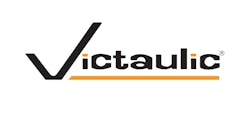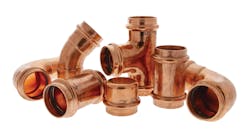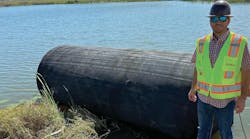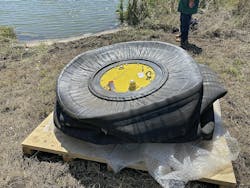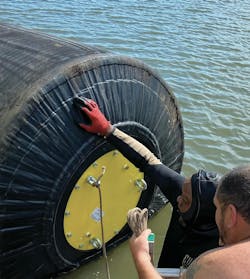Latest from PVF
Sponsored
ORLANDO, FL — Universal Studios, a leader in the entertainment industry, is well-known for its iconic theme parks and attractions. Its latest venture in Orlando, Universal Epic Universe, is an upcoming theme park under construction and scheduled to open in 2025.
However, recently, the project encountered a significant challenge that required immediate and precise attention. The challenge involved replacing 18 chiller line valves located 25 feet underground in the new theme park’s parking lot.
The valve-replacement project involved three different construction companies, each contributing their specific expertise.
● Comprehensive Energy Services (CES) specializes in mechanical contracting, focusing on HVAC, plumbing, and piping solutions.
● National Trench Safety (NTS) provides equipment rental with an emphasis on trench and traffic safety, along with pipe plugs and OSHA training.
● GPH Services is involved in site development and offers cleaning, inspection, and internal repair services for sewer and storm pipes. GPH also provides certified divers for underwater installations.
“The 18 valves to be replaced were located 18-25 feet deep, so the crew required shoring with sheeting frames to access them,” explains NTS Account Manager Tim Kelce.
“We had to shore a 16-foot by 16-foot square area that was 25 feet deep. However, a 108-inch Reinforced Concrete Pipe (RCP) pipe ran alongside the valves, making it necessary to remove two sections of this large pipe at each location to gain access.
“The piping system drained into a retention pond, which served as the main drainage for the theme park,” he continues. “To remove the two pipe sections, we had to stop the water from entering the system. This required us to plug the 108-inch pipe that was eight feet deep in the pond.”
Given the specific conditions of the site, the primary considerations were:
● Pipe size: As noted, the pipe that needed blocking was 108 inches in diameter.
● Depth: The opening of that pipe was about 8 feet deep underwater.
● Head pressure: The retention pond had significant head pressure on the pipe.
The project required an innovative solution to block the extreme water flow and ensure safety during repairs.
Each company played a distinct role in addressing the project’s diverse requirements:
● NTS supplied and rented the essential plug that blocked the storm drain, allowing the valve service to be completed.
● CES Mechanical serviced the chiller line valves.
● Subcontracted by CES, GPH Services installed the plug in the storm pipe with their team of divers/installers so that CES could service the valves.
Working Smart - Working Safe
To block the pipe, NTS purchased from Cherne Industries a multi-size 72-120-inch I-Series Test Ball Plug, the world’s largest pipe plug, chosen for its unmatched size and capacity to handle the specific demands of this project. NTS then rented the plug to Comprehensive Energy Services, which contracted GPH Services for their expertise with Cherne pipe plugs and their skilled divers experienced in complex underwater installations.
GPH Services ensured the Cherne Plug was installed correctly with the proper steps to give CES the safety and access to make their repairs.
The Cherne I-Series Test Ball Plug is the only municipal plug in its size range that is stocked locally for immediate availability. This innovative solution stands out not only for its size but also for its exceptional design features that enhance performance and safety. Weighing 850 pounds and measuring 152 inches in length, the 72-120 in. Test-Ball Plug is engineered for best-in-class functionality, meeting the demands of various applications.
All Cherne pneumatic test plugs are made from 100% natural rubber, which allows them to conform better to pipe surfaces. Rigorous quality control ensures the plugs can withstand internal and external pressures, a feature that is crucial for an underwater application like the Universal Studios project.
Before installation, the plug underwent thorough testing from GPH to confirm it would inflate properly and create a secure seal within the pipe. This testing was essential to ensure the plug’s functionality and readiness for use.
Preparation also involved cleaning the pipe to remove any potential debris or protrusions that could compromise the plug. Cody Crawford, Vice President of Operations at GPH Services, emphasizes:
“Cleanliness is critical. We have to make sure that no debris will cause any damage. We also check the face plates and pressure relief valve, making sure it’s all in working order before putting the plug in the water.”
Safety protocols were paramount throughout the operation. The diver was equipped with a five-point harness and multiple air supply backups, significantly enhancing safety and confidence during the intricate process. Regular communication among the team members ensured a coordinated effort, further minimizing risks.
A Pretty Big Deal
According to GPH Services’ Crawford, “The plug worked great, just like any other Cherne plug. Its performance was exceptional, and it met all our expectations.”
NTS’ Kelce recalls approaching the project with more than a little enthusiasm, noting: “I’m installing the largest plug in the world, and that’s a pretty big deal.”
Encapsulating the magnitude and importance of the task, this statement underscored not only the scale of the project, but also the pride and excitement the team felt in contributing to such a groundbreaking endeavor. The Universal Studios installation represented not just a superior technical achievement, but also showcased the dedication and expertise of all involved.
The choice of premium materials and rigorous adherence to safety measures facilitated a seamless resolution of the immediate challenge and established a benchmark for future large-scale projects. This commitment to excellence in both installer safety and material quality bodes well for similar engineering projects in the future.
